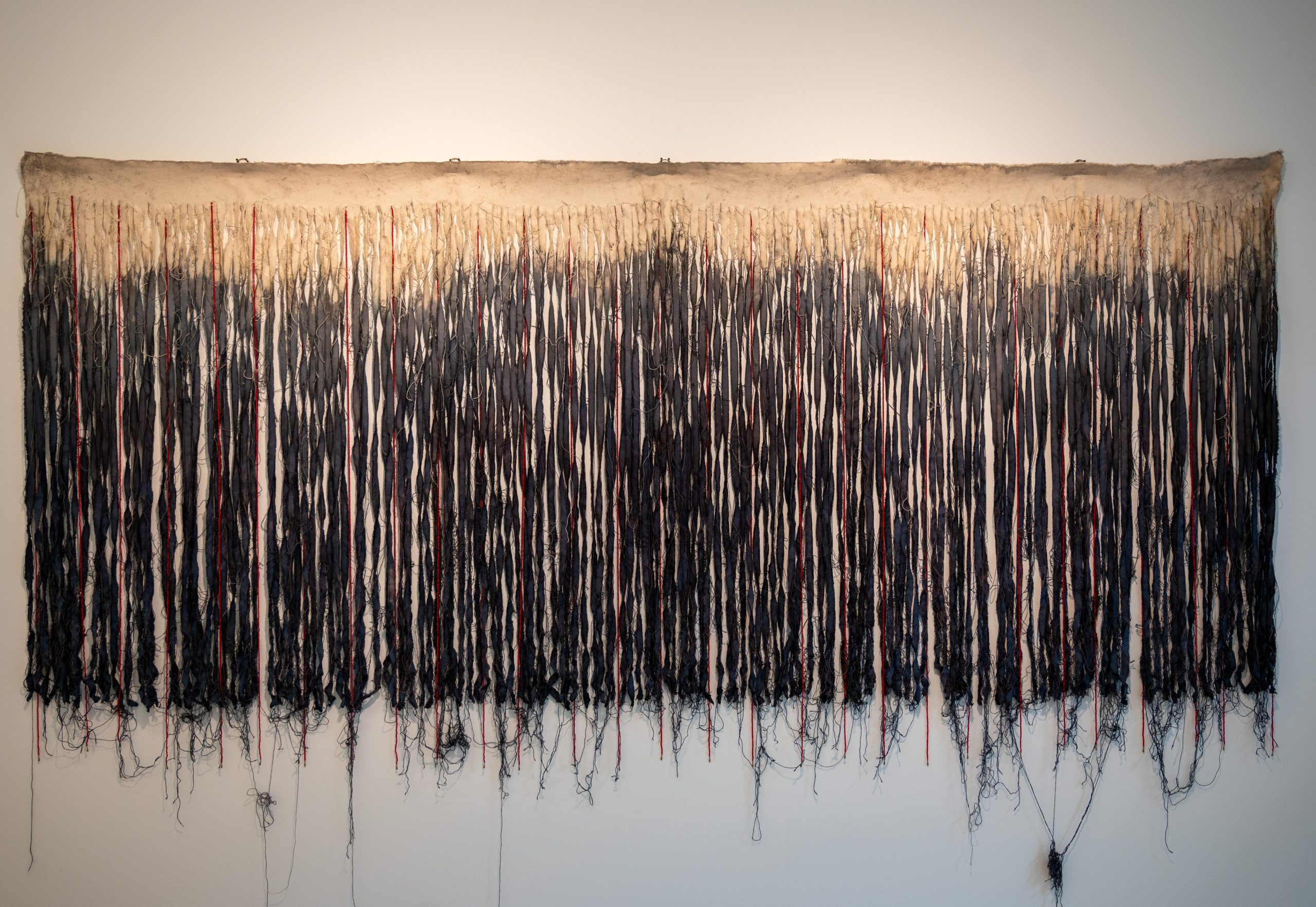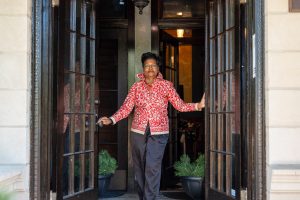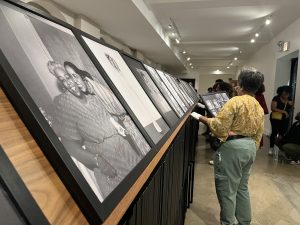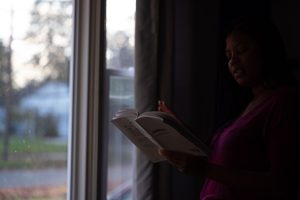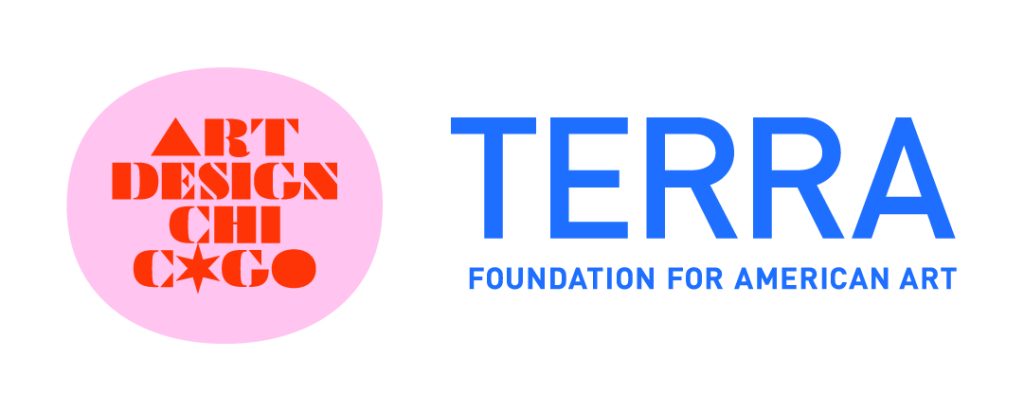
This article is presented in conjunction with Art Design Chicago, an initiative of the Terra Foundation for American Art that seeks to expand narratives of American art with an emphasis on the city’s diverse and vibrant creative cultures and the stories they tell.
Tonal Simmons speaks with Indigenous artists, curators, and guests as they share their stories and cultural expressions in the inaugural exhibition at the Center for Native Futures (CfNF), the only Native-led fine art gallery in Chicago. The inaugural “Native Futures” exhibition features more than a dozen established and emerging Native artists in the Great Lakes region, including works by CfNF co-founders, Noelle Garcia, Kelly Church, Jason Wesaw, Tom Jones, Holly Wilson, John Hitchcock, Camille Billie, June Carpenter, Codak Smith, Le’Ana Asher, Dakota Mace, Ji Hae, Debra Yepa-Pappan, Chelsea Bighorn, Lydia Cheshewalla, Hattie Lee, X and TIES poets. The exhibition is on view from September 16, 2023 – May 17, 2024.
AUDIO TRANSCRIPT
Frank Waln (he/him), Native Artist: I’m utilizing my language in this song so you’re gonna hear lyrics and Lakota and this was one of the first times I set out to write a song entirely in my language. I did not grow up speaking my language. I tried to use my art to reclaim it and to share it with the world and share it with you all, including ways like this, [chants] Oyate. Let’s practice.
Audience: [Audience Chants Together] Oyate.
Tonal Simmons (they/them): This is Frank Waln, a Sicangu Lakota hip-hop artist and music producer from the Rosebud Reservation in South Dakota, who is now based in Zhegagoynak. He is performing his song “Hope” with support from the audience at the inaugural exhibition of the Center for Native Futures.
The Center for Native Futures is the only Native-led fine art gallery in Chicago, which makes this inaugural exhibition a deeply historical and culturally significant moment for Native artistic expression in the Midwest. Throughout this story, I will use Potawatomi and Algonquin words, like Zhegagoynak which means Chicago, and Mishigamaw which means Michigan, to describe the occupied land we are on.
Before we begin, I would like to acknowledge the land on which this story was recorded. It is land that has been occupied and seized and is the territory of the Potawatomi, Ojibwe, Odawa, Menominee, Ho-Chunk, Myaamia, Peoria, and many other Indigenous communities who have stewarded this land. Because of them, the Center for Native Futures is able to exist.
On a typical cloudy and rainy fall day, people gather inside the Center for Native Futures, located at 36 West Adams Street across from [Alexander] Calder’s Flamingo. Shoulder-to-shoulder guests meander throughout the gallery space, gazing at various art pieces—some stretched vertically while others horizontally.
In one corner of the 3,600 square-foot gallery, is a handcrafted stroller constructed from natural materials and woven fabric over the wheels. It is the only moveable art piece in this exhibit. With its handles, fashioned from antlers, it stands as a testament to the artist’s creativity. As you explore the gallery, there’s an ambiance of affection, comfort, and care that it permeates.
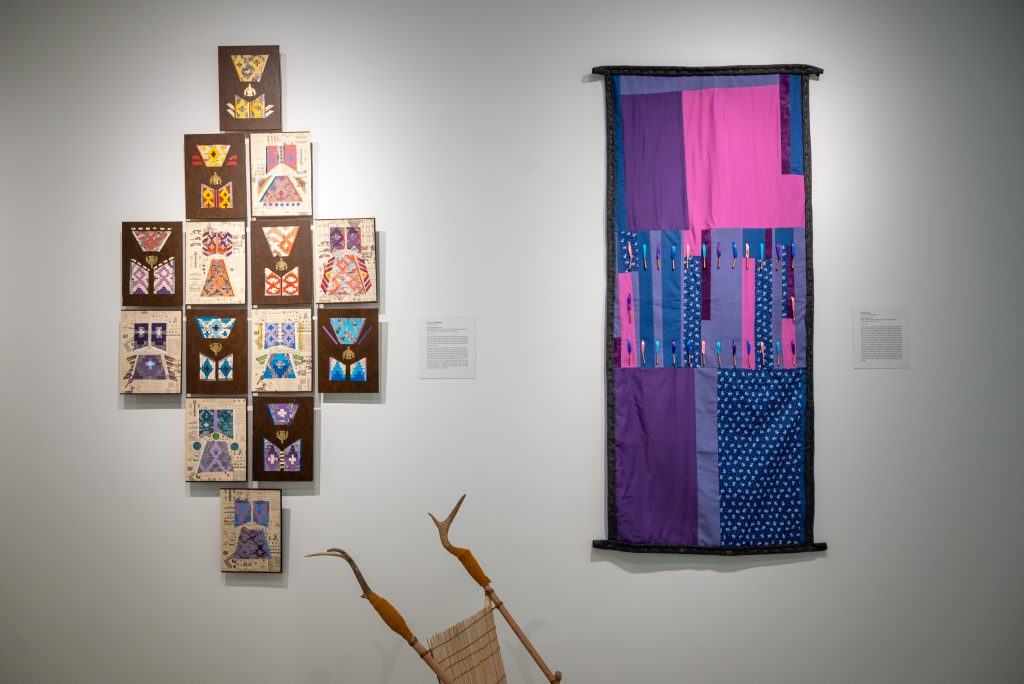
Chelsea Bighorn (she/her), Native Artist: There was a lot of consideration taken in how our art is shown and our statements and just how diverse the work is. It has been really great to see contemporary Native art having its moment in Chicago. It has been great to be a part of.
Tonal: That is Chelsea Bighorn, an accomplished Indigenous artist, who is also presenting her work in the group exhibition. Black Fringe is a seven-foot-wide canvas, elegantly dyed in shades of tan and black, featuring an impressive three-foot frayed fringe. Upon closer inspection, the viewer can discern Bighorn’s masterful integration of traditional beading, with discreet red beads extending the entire length of the artwork and cleverly nestled among the layers of fringe. Black Fringe is a testament to Bighorn’s artistry, fusing tradition and contemporary expression in a captivating display.
Bighorn goes on to describe her favorite part of the day.
Chelsea Bighorn, Native Artist: Oh gosh, being able to share the space with my family and my friends. I’m a grad student at school, the Art Institute of Chicago, and being able to have my cohort and friends be here and becoming, like, a part of the community that I love being a part of has been great. And it’s so close to school, which is nice. It does help. Yeah, so it’s like a nice little safe space where I can just walk down the street and have a nice quiet space.
Tonal: While some guests are community members and friends, others are family. Next, you’ll hear from two cousins, Shaan and Molly. They are First Nations, and together they came to the gallery opening to see Native art in a space curated by Native artists. Here, Shaan discusses the impact of storytelling and community.
Shaan (she/any pronoun), Guest: There’s no one particular artist. I mean, there are a few artists that I know and stand out to me obviously, but it’s it’s everything as a whole, the entire the entire gallery as a whole. That I think that that’s just in itself, it’s a statement of resiliency, you know, and it’s kind of like a fuck you to the colonialism. Yeah. So that’s, that’s it’s the entirety of itself. It’s so important because it means our stories are still going, they’re gonna keep going.
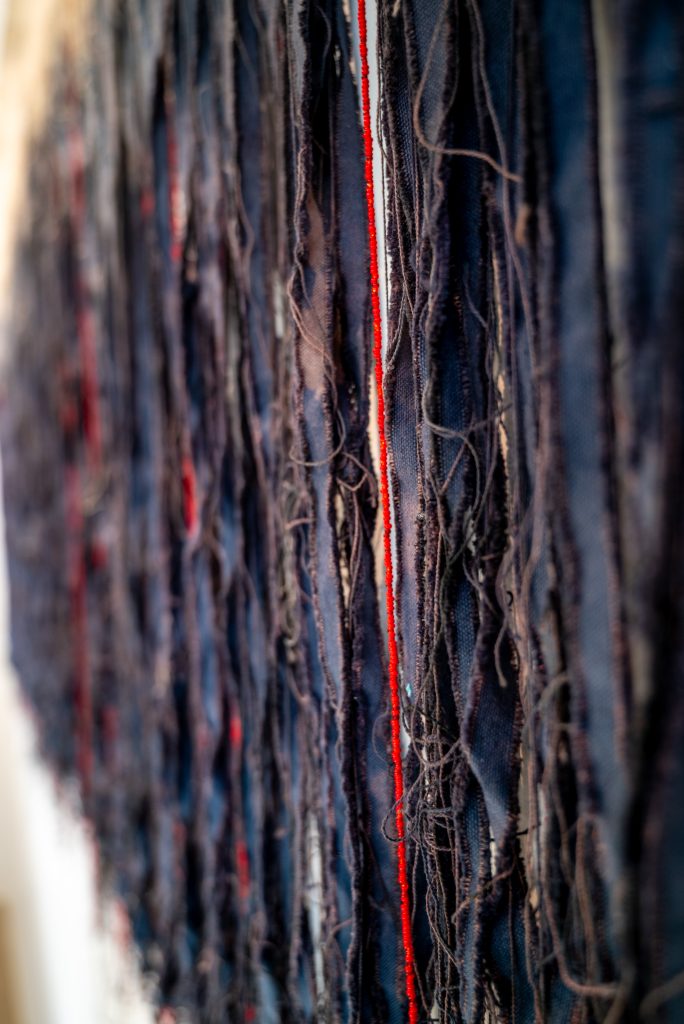
Tonal: Now here’s Molly, they share whose work they are most interested in seeing at the Native Futures opening reception.
Molly (she/he/they), Guest: Frank Waln, and Chris Pappan—seeing them, seeing Deborah, actually seeing her work. I’ve met her many times, but I’ve never seen her work. So it’s really nice to see her work. But seeing, for me, seeing Chris and his ledger work. I’m really a fan of that. But and then I noticed that my cousin’s off on this wall over here. Jason Wesaw, I’m like, well, I’ve seen some of my cousin’s work, but now he’s actually showing here. So it’s really nice. But just knowing that there are artists here, period, I’m looking forward to meeting them.
Tonal: There are roughly 236 Tribal museums across the United States. Less than 1% of all the museums currently occupying space on Great Turtle Island are Native-led and owned. While many of the museums are working to revamp their programs to include more Native work, is it enough to just hire Native curators to diversify their art space? Especially, when many of these cultural spaces were founded and maintained to uphold white supremacy. So, what does it mean for Indigenous, Black, and Brown creatives to dream of our Futures within the four walls we build?
Bless Begay (he/him), Guest: I hope it impacts Chicago where they can see there’s a, there are Native artists that are contemporary artists, we didn’t die in the 1890s. We still have art, we still have artists, you know, we can do it here. And then we can do it in the Midwest and nationwide.
Debra Yepa-Pappan (she/her), Artist and Co-Founder: Seeing all the people coming in, especially for the first hour for the Native community VIP reception. I was, I guess overwhelming, is the, is the word that would describe just how, you know, all of this has felt.
JRon (he/him), Guest: Myself, so, a Central American Native, feels good to be able to have a space for people to express their art, you know? As a Native, you know, there are not too many places where you can show your art and be surrounded with the community that it’s in the mix. And like I said, the vibe was just amazing today.
Deshea (she/her), Guest: I think it’s really amazing. Honestly, I don’t know specifically like any time where I’ve seen Native art that was actually led and like procured by people who are Native. You know, I think a lot of times you see that in spaces that are procured by like white people, and so that it just has a different, I think, meaning and feeling around it.
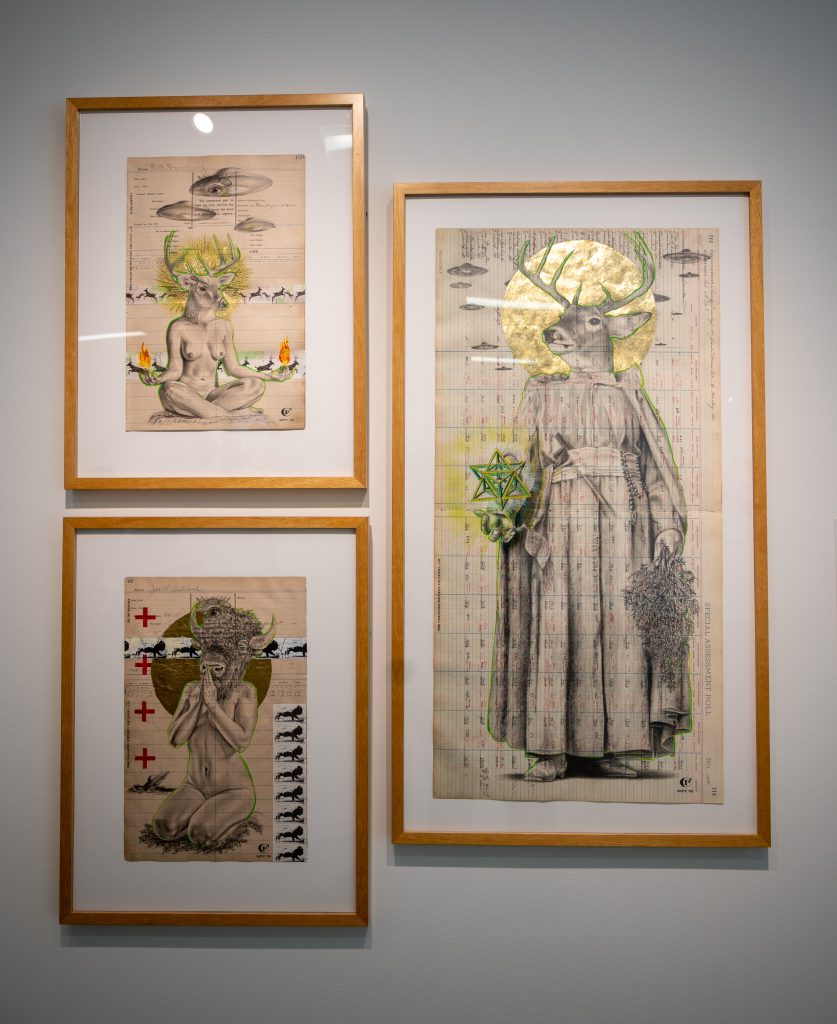
Tonal: As a Black, biracial, queer, nonbinary artist from Mishigamaw, I understand the impact of growing up never seeing works of art by Black people, especially Black queer people. To never be able to visit a museum or gallery to view art by Black and African people that were not stolen artifacts impacts the way we see ourselves, our histories, and our cultures.
The museums I did visit, I was only able to view from the sidewalk outside their 20-foot floor-to-ceiling glass walls. This impacted my own journey with self-discovery and art exploration, which didn’t come until I turned 30. Moreover, it made me feel like art by Black and Brown Indigenous communities were not worthy enough to be in the spaces. It wasn’t until I began to go to galleries and exhibits made for us that I began to heal my relationship with dreaming and building.
Next, you’ll hear from friends Jeanette and Ezekiel who came to support their friend, Camille Billie. They discuss their feelings about seeing a more modern take on traditional techniques by Native artists.
Jeanette (she/her), Guest: This just gives me more hope that like Indigenous artists, whether they be from SAIC or just around the community, have a place a professional gallery space to have their work installed. And that’s like so important, especially like, just because of the history of how Native art has been handled. This is like super powerful. In my opinion.
Ezekial (he/they), Guest: Plus its’s super cool, because it’s just downtown and open for the public. And it’s like art beyond the more traditional Native art, you see, like there’s one that has like spaceships on it which is super cool.
Jeanette (she/her), Guest: Yeah, or like the use of crayons, but like also, like, the use of like traditional techniques of just like taking natural materials and putting them together. And then like, yeah, and or something like this with or with just like printmaking or what Camille does, which is like a more modern take on the imagery, you know. So it feels really cool to see what modern Indigenous artists are making and bringing, how we all bring our culture back into, like, what we’re making.
Tonal: When Black and Brown Indigenous people have the opportunity to tell their own stories it amplifies their voices and addresses historical imbalances in media and literature. As we’ve heard today these stories serve as a powerful means of preserving cultural heritage and promoting self-expression.
The Center for Native Futures proudly serves as the only Indigenous-led gallery in Zhegagoynak at this moment in time. However, co-founder Deborah Yepa-Pappan expresses her hopes, heartfelt sentiments, and vision for this space.
Deborah Yepa-Pappan, Center of Native Futures Co-Founder: I just want people to come in here and learn from the art to look at the art to, you know, see what we’re visualizing and how we’re envisioning our future. And I’m hoping that, you know, this is just helping to build that foundation for better representation of Native art, Native people, you know, for generations to come. And, you know, yes, it’s nice to say that we’re the only, you know, Native artists-led organization right now, but I don’t want us to be the only one. We don’t have to be the only one you know, there. There should be many. And why not? You know, so I would love to see the future of, you know, just having more of these types of spaces.
Tonal: When I look around the city, I see Indigenous Black and Brown creatives expanding the way art galleries can be accessible. By turning homes into artists’ collectives, morphing galleries into open mics, or turning freight containers into exhibit halls. We are here. So I wonder if we are all just artists with limited space and means to dream, especially Indigenous Black and Brown communities.
This story was brought to you in conjunction with Sixty Collective and Art Design Chicago. Thank you to the Center for Native Futures, the artists of the exhibit, and the guests who allowed me to interview them for this piece.
Native Futures will be on display until May 17, 2024. Be sure to go and engage with them in person. You can also engage with them online, their website is www.CenterforNativeFutures.com or IG @centernativefutures .
My name is Tonal Simmons, pronouns they/them, and you can view the photos and transcript that accompany this piece online at www.sixtyinchesfromcenter.org. or on my website at www.tonalscorner.com. That’s www.tonalscorner.com. Thanks for listening.
Frank Waln, Native Artist: [Frank Waln plays flute and raps in Lakota.]
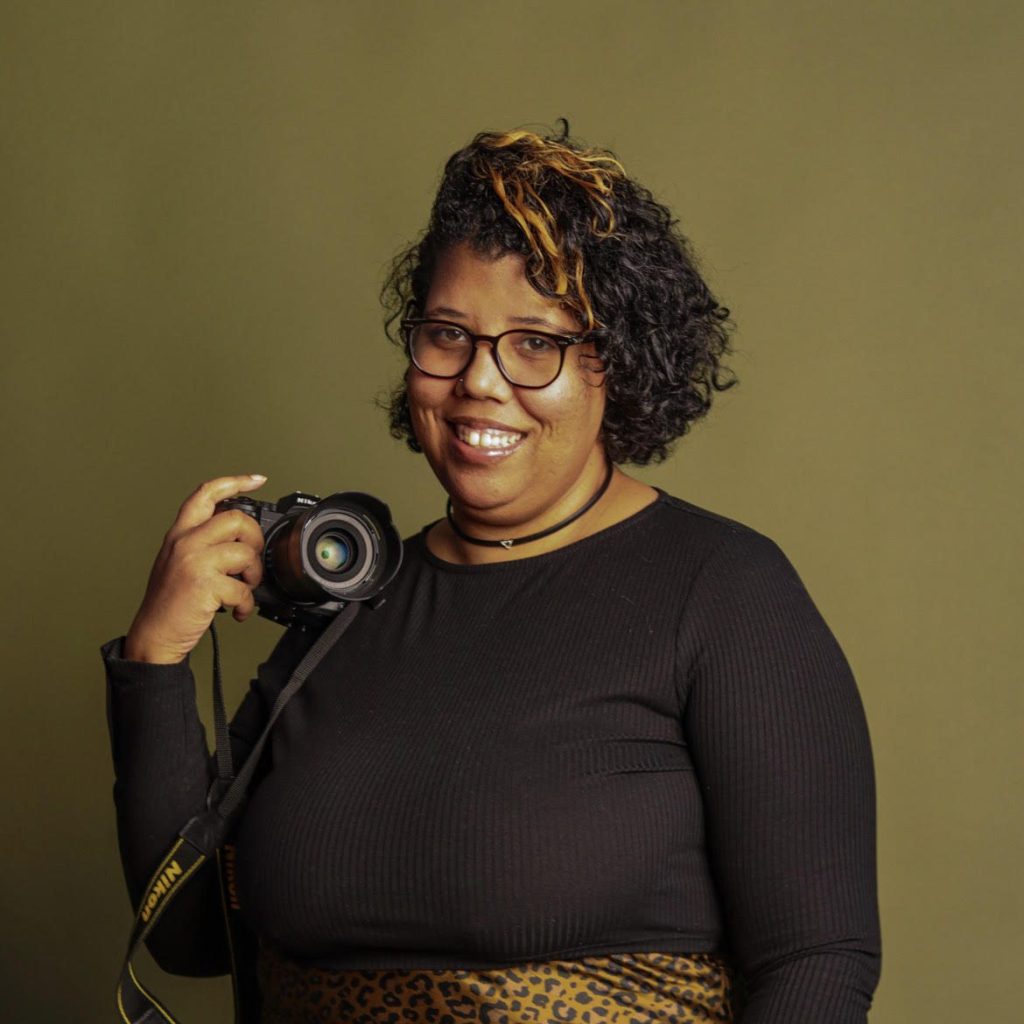
About the author and photographer: Tonal Simmons (they/them) is a Black queer non-binary artist who is a writer, photographer and painter. Their photography and painting seeks to examine the similarities between flowers, growth, and Black queerness. While their writing explores the idea of DEI within art, creating w/chronic conditions, & lack of access to art for Black and brown creatives. You can check out their personal work at www.tonalscorner.com
